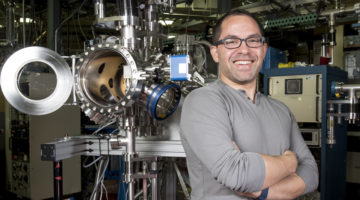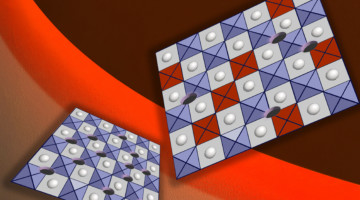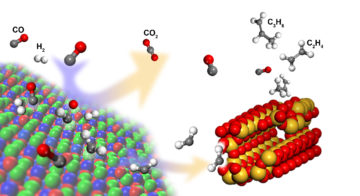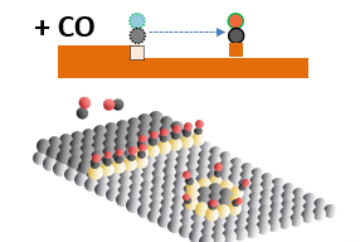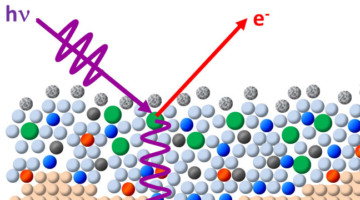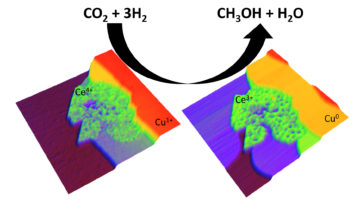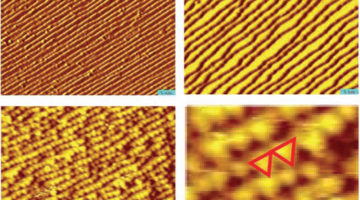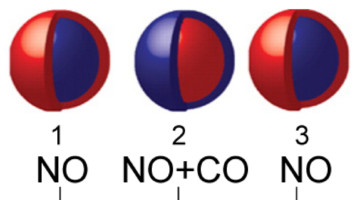Scientists can now directly probe a previously hard-to-see layer of chemistry, which forms in a narrow band where liquid meets solid, thanks to a unique x-ray toolkit developed at Berkeley Lab. Read more »
A Surface Treatment for Improving Fuel-Cell Cathodes
Solid-oxide fuel cells (SOFCs) are a promising path toward the “clean” conversion of chemical energy to electrical energy with little or no carbon dioxide emission. With the help of the ALS, researchers from MIT recently found a way to treat SOFC cathode surfaces so that they perform better and last longer. Read more »![]()
![]()
New Catalyst Boosts Selective Formation of Olefins from Syngas
Experiments at the ALS have helped to explain how a new catalyst significantly boosts the selective formation of light olefin molecules—important building blocks in the petrochemical industry—from syngas. The new process could allow for the use of alternative syngas feedstocks that save water and energy. Read more »![]()
![]()
An Atomic-Level Understanding of Copper-Based Catalysts
Copper-based catalysts are widely used in chemical industries to convert water and carbon monoxide to hydrogen, carbon dioxide, and methanol. There are theoretical models used to explain this reaction, but a complete understanding of the process has been lacking. However, recent research at the ALS has shed light on the process, giving scientists key data about how copper-based catalysts function at the atomic level. Read more »![]()
![]()
New Technique Gives a Deeper Look into the Chemistry of Interfaces
A new technique developed at the ALS offers sub-nanometer depth resolution of every chemical element to be found at heterogeneous interfaces, such as those in batteries and fuel cells. The technique has relevance to energy research, heterogeneous catalysis, electrochemistry, and atmospheric and environmental science. Read more »![]()
![]()
From CO2 to Methanol via Novel Nanocatalysts
Researchers have found novel nanocatalysts that lower the barrier to converting carbon dioxide—an abundant greenhouse gas—into methanol—a key commodity used to produce numerous industrial chemicals and fuels. In one case, it worked almost 90 times faster than catalysts commonly used for this reaction today. Read more »![]()
![]()
Platinum Nanoclusters Out-Perform Single Crystals
Researchers have found that under high pressure—comparable to the pressures at which many industrial technologies operate—platinum surfaces can change their structure dramatically in response to the presence of high-coverage reactants. Read more »![]()
![]()
Reaction-Driven Restructuring of Bimetallic Nanoparticle Catalysts
Researchers have used an ambient-pressure x-ray photoelectron spectroscopy (APXPS) apparatus to demonstrate that bimetallic nanoparticle catalysts can undergo profound structural and chemical changes in response to reactive environments at ambient pressures, thereby opening the way for engineering catalysts with enhanced activity and selectivity. Read more »![]()
![]()
- « Previous Page
- 1
- …
- 3
- 4
- 5
